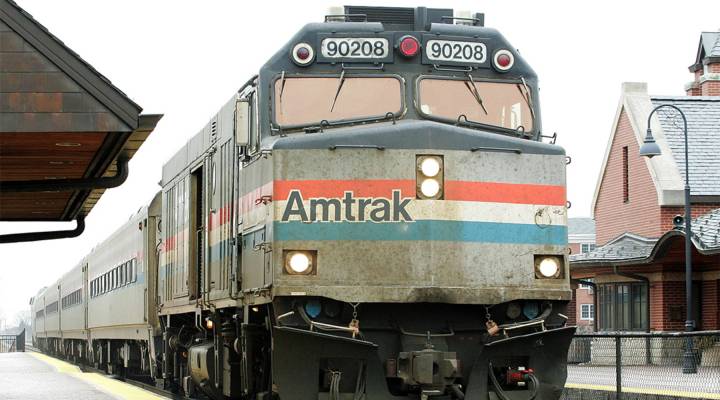
The U.S. has tried to build high-speed rail for 50 years

Here’s a little trivia question for you – what is the largest public works project currently underway in the U.S.? The answer is California’s high-speed rail line. Despite years of setbacks and the recent back-and-forth between President Trump and California Governor Gavin Newsom over federal funds, the project continues. If completed, it would connect San Francisco to Los Angeles with the country’s first bullet train, after more than 50 years of proposals.
Here’s a look at some of the key milestones.
1934: Union Pacific and Burlington introduce the first streamliners, the M-10000 and the Zephyr 9900. They can reach speeds of 110 mph and give the U.S. the fastest trains in the world.
1956: President Dwight Eisenhower signs the Federal-Aid Highway Act, initiating 41,000 miles of interstate freeway construction, which would last for more than three decades.
1964: Japan’s Tokaido Shinkansen, the world’s first high-speed rail line, begins operation. It reaches speeds of 130 mph, cutting the 300-mile trip time from Tokyo to Osaka in half.
1965: President Lyndon Johnson signs the High-Speed Ground Transportation Act of 1965, authorizing the first U.S. high-speed rail lines in the Northeast corridor, between Washington, D.C. and Boston.
1969: The popular Metroliner, created by the act, begins running from D.C. to New York. Faster cars run along existing track. Often referred to as “higher-speed rail,” the Metroliner averaged 90 mph and ran the trip in 2.5 hours at its fastest, but suffered notorious mechanical problems.
1971: The Congressional Rail Passenger Service Act establishes Amtrak, a publicly subsidized rail service, to take over inter-city passenger train transport from private rail companies as ridership declines.
1975: Funds from the High-Speed Ground Transportation Act run out.
1981: France begins operating its TGV high-speed rail service from Paris to Lyon.

A TGV high speed train at the Montparnasse-Vaugirard station in Paris in 1989.
1991: Germany connects Hamburg and Stuttgart with its ICE high-speed train service.
1992: Spain opens its first high-speed line from Madrid to Seville.
2000: Florida voters approve a constitutional amendment to create high-speed rail system to connect the state’s urban centers.
2004: Florida voters repeal the constitutional amendment, although planning for a Tampa to Orlando line continues.
2006: The Metroliner ceases running from Washington, D.C. to New York, as Amtrak replaces it with the Acela, which can reach the same speeds, but stops more frequently, slowing trip times.

Passengers check tickets at the gate for a Washington, D.C. bound train at Penn Station in New York City in 2002.
2008: California voters approve nearly $10 billion in bonds for a high-speed train from Los Angeles to San Francisco. Total estimated cost: $39 billion.
2009: President Barack Obama signs the economic stimulus, providing $8 billion to high-speed rail projects. California ultimately receives $3.3 billion in federal funds. Florida receives $2.4 billion.
2011: Newly-elected Florida Governor Rick Scott cancels the state’s high-speed rail line, returning the federal money.
2015: The Tokaido Shinkansen reaches speeds of nearly 180 miles per hour from Tokyo to Osaka.
2018: After years of delays and cost overruns, the California high-speed rail project cost increases to $77 billion. Florida’s higher-speed Brightline begins operating from Miami to West Palm Beach, the first privately owned rail service to operate in the US since the 1980s, when Amtrak took over the final streamliner route.
2027: Japan’s planned date for its maglev train, capable of running at over 300 miles per hour.
2033: Most recent projected completion date for California’s high-speed line.
There’s a lot happening in the world. Through it all, Marketplace is here for you.
You rely on Marketplace to break down the world’s events and tell you how it affects you in a fact-based, approachable way. We rely on your financial support to keep making that possible.
Your donation today powers the independent journalism that you rely on. For just $5/month, you can help sustain Marketplace so we can keep reporting on the things that matter to you.


















